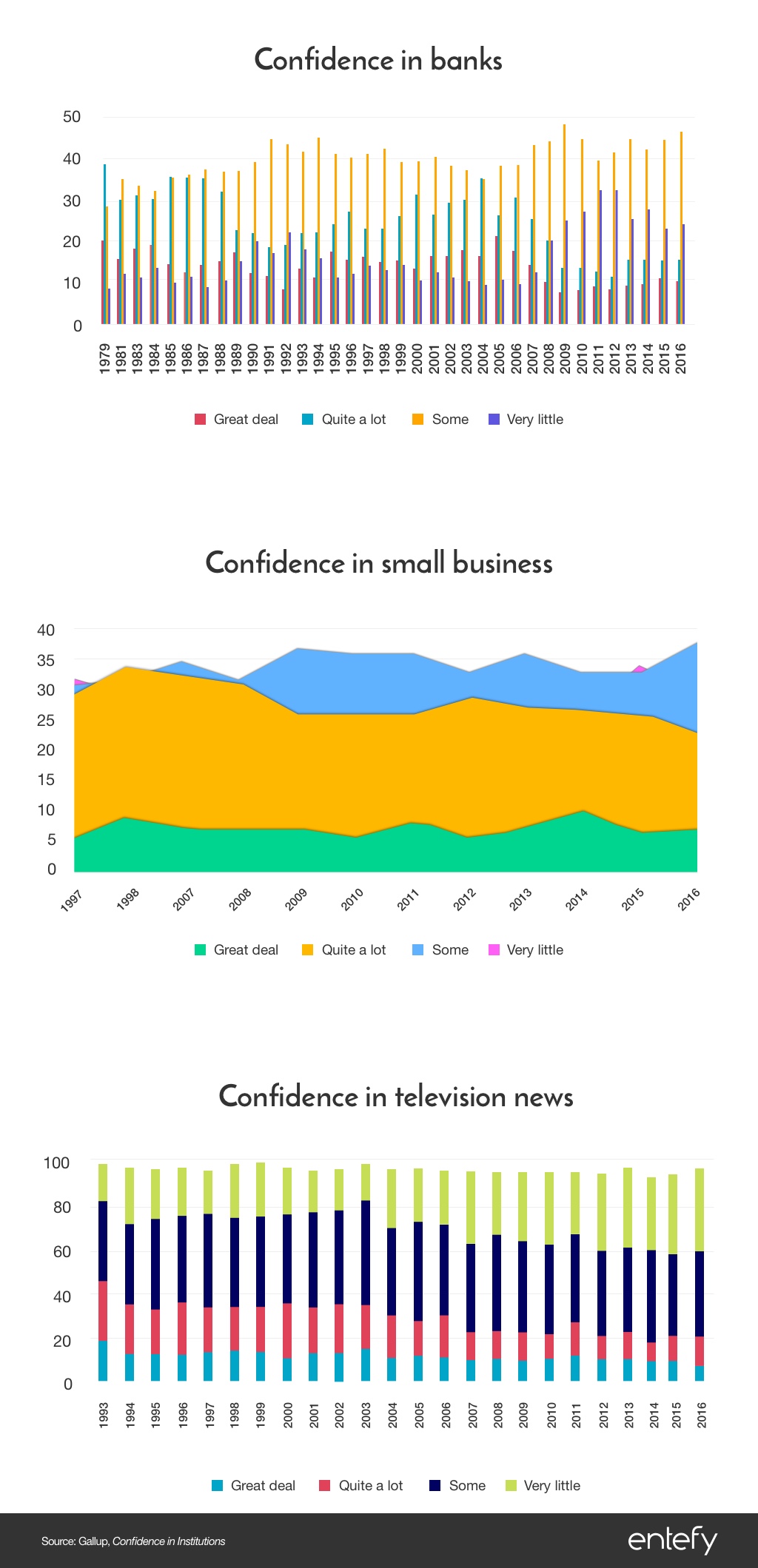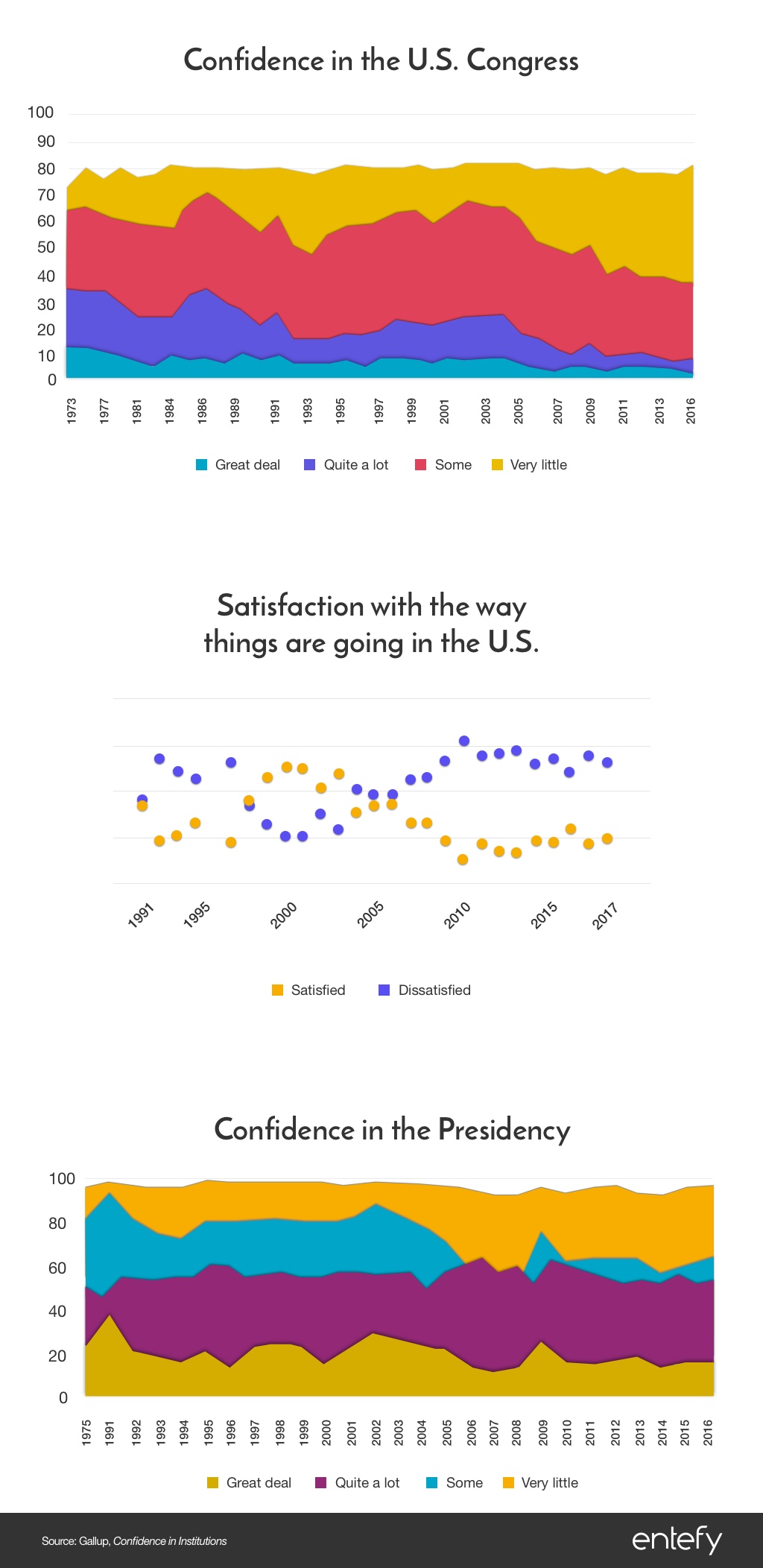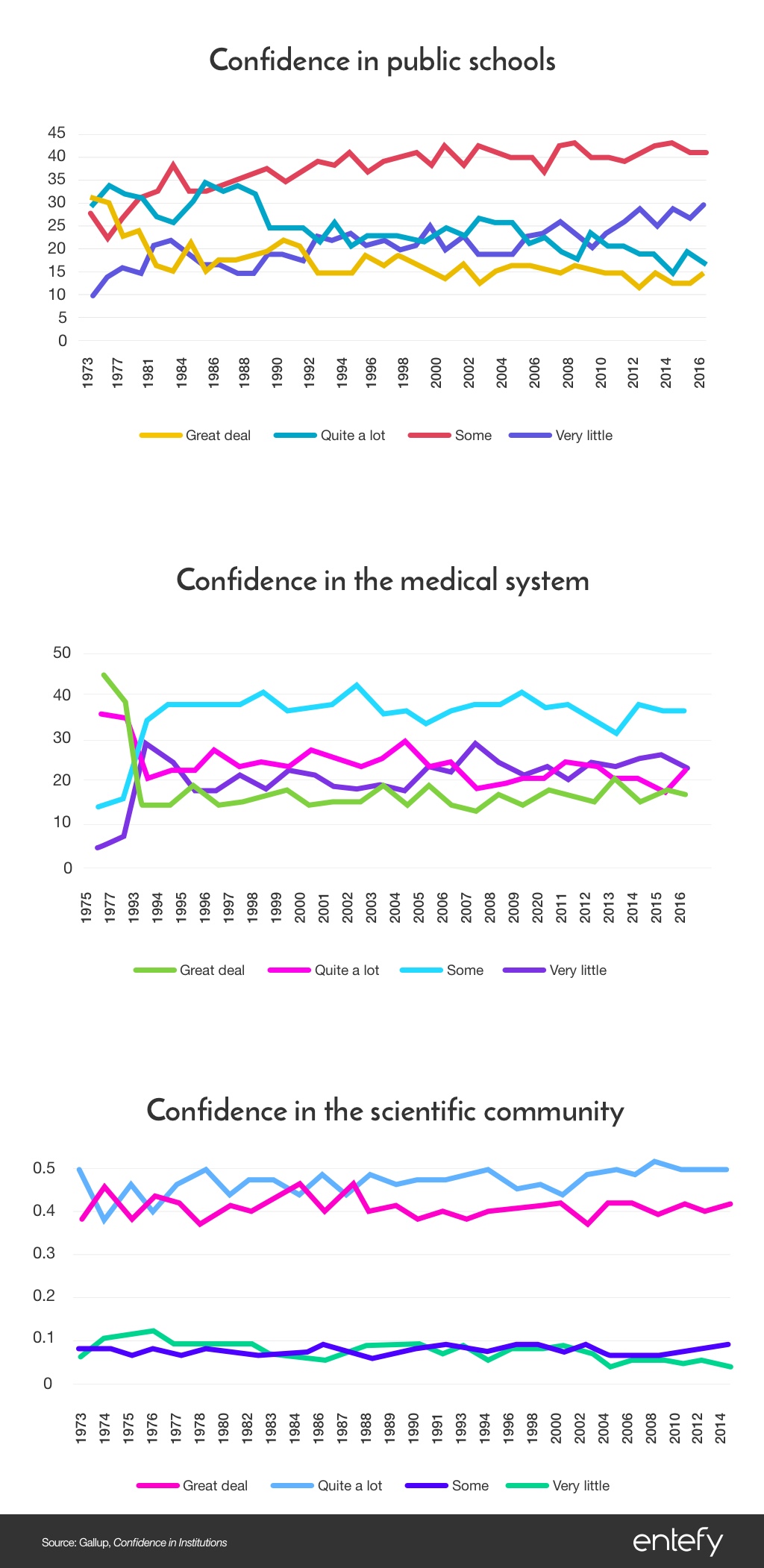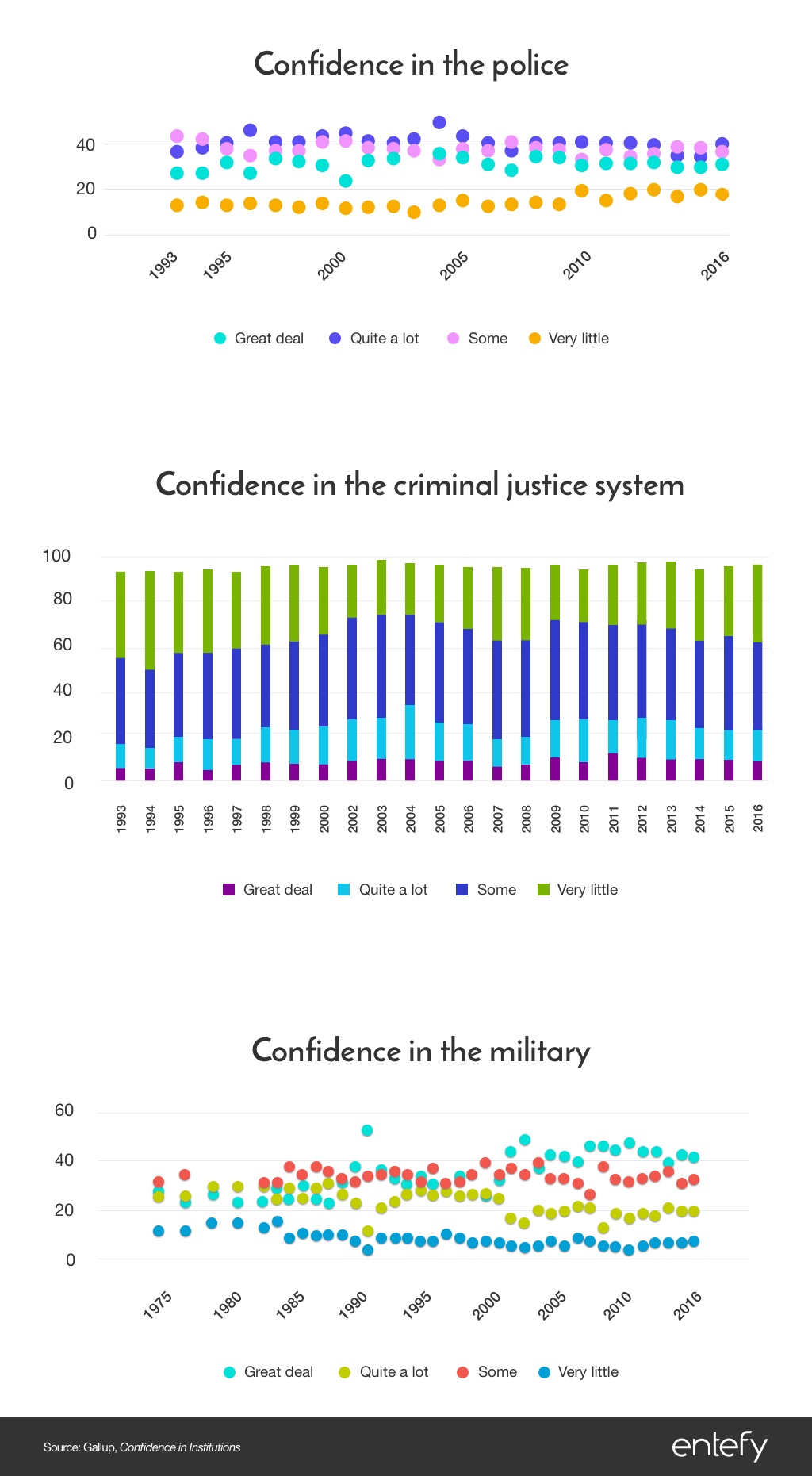Entefy’s research into the complexity of modern life continues below. In Part 1: The bygone Golden Age, we outline the paradox of prosperity, the observation that despite widespread evidence of the world’s progress, our individual experience of life is often something quite different. In Part 2: Defining modern complexity, we analyze the aspects of life today that create the experience of complexity and consequentiality. In Part 3: The general erosion of confidence, we look at the evolution of our collective trust in social institutions. In Part 4: Family, friends, and community, we analyze the structure of social circles and changes to income and education. The report concludes by examining how digital technologies can contribute to meaning and fulfillment in modern life.
Part 3: The general erosion of confidence
The importance of confidence and trust at a cultural or societal level has become the subject of intense study among economists and sociologists. It has become increasingly clear that societies and cultures with high levels of confidence in their institutions are also societies and cultures with high levels of productivity and development.

Among the mechanisms by which confidence contributes to economic, societal, and personal development is efficiency. When there is high confidence, a handshake can take the place of a contract, saving time and money. The lower the level of confidence, the more precautions have to be taken, the more you have to focus on managing risk.
Gallup has been monitoring trust and confidence levels in institutions for decades. They cast their survey questions in terms of confidence: “Please tell me how much confidence you, yourself, have in each one — a great deal, quite a lot, some, or very little?”. They started asking these questions in 1973, and have added additional institutions over time. The results are insightful and tell us a great deal about how complexity has impacted our day-to-day lives.

There are some bright spots. Today, we are more confident in Small Business, the Police, the Military, and the Scientific Community than when polling began decades ago. Confidence in Small Business has always been high and remains so. While the Military scores the highest confidence at 73%. The Scientific Community, on the other hand, elicits only a moderate degree of confidence; but confidence in the community has risen 11% since 1973.
Confidence is eroding in most of the institutions covered in the survey. These include institutions that are part of most people’s everyday lives like Banks, Television News, and the Medical System, as well as government and public services like Congress, the Presidency, and Public Schools.
Today, Congress earns the lowest confidence score at just 9%, a 79% erosion from when the survey began in 1973. Television News is not faring much better, with confidence falling from 46% in 1993 to 21% in 2016.

In 1993, new categories such as the Medical System and the Criminal Justice System were added to the survey. The Medical System received an 80% confidence vote, the highest of all categories in the survey. That number has since declined by slightly more than half to just 39%. In the same year, the Criminal Justice System scored the lowest at only 17%, though it has seen modest increases since, to 23% in 2016.
To sum it all up in one stat, satisfaction with the way things are going in the U.S. is only 27% and that is nearly half of what it was in 1989.
In sum, we know that trust and confidence are critical elements in a healthy society and economy and that high levels of trust and confidence contribute to productivity and overall prosperity. As important as these attributes are, the past several decades have seen overall declines in confidence in most of our institutions.

Which brings us back to the idea of complexity. The everyday experience of this data is troubling. Day to day, we have little confidence in the veracity of a speech in Congress, or the fairness of a judicial ruling, or the motivations of the bank that holds our savings. So our experiences of these interactions are strained and overly complicated.
Part 4 of this report concludes Entefy’s analysis with a look at the evolution of friends, families, and communities; and a discussion of how digital technology can transcend the paradox of prosperity.